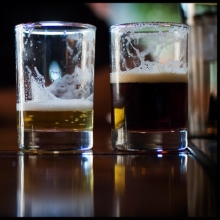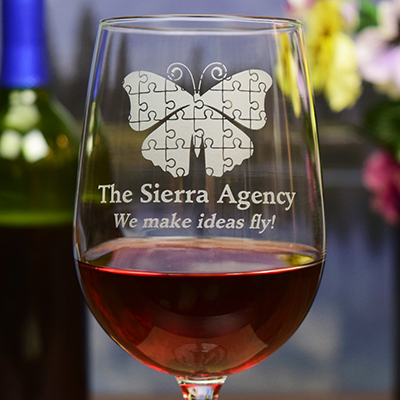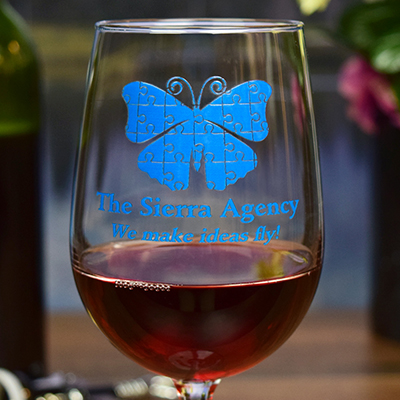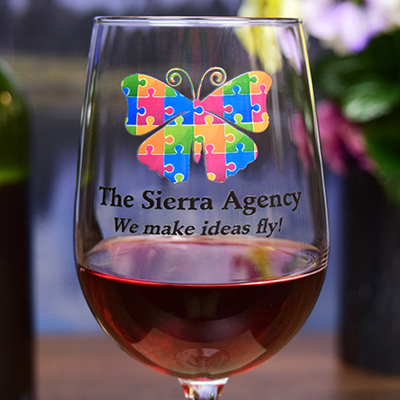The Ales of Scotland
The Ales of Scotland

In this article we look into the distinct ales of Scotland. Although malt whiskey usually springs to mind when one thinks of Scottish beverages, the Scots have a long history of ale brewing dating back to the time of the Picts.
A Wee Bit Of Background
Because of its rugged geography and northern climate, Scotland is a natural barley growing country. While much of the barley grown in the north of the country is destined for the distilleries, the barley grown in the south heads for the mash tuns of brewers the world over.
Unfortunately, this climate is quite inhospitable to hop cultivation. Early Scottish brewers resorted to other ingredients such as sweet gale, pepper, and ginger to provide bitterness. Leann Fraoch, brewed for Bruce Williams under contract by Maclay's Alloa brewery, uses the fresh tips of the native heather as a flavoring. Should you find a bottle of this at a specialty store, be sure to try it.
 The 1707 Treaty of Union that brought Scotland into the United Kingdom also excluded Scotland from malt excise taxes. The combination of climate, tradition, and politics has forged the flavors of Scottish ales.
The 1707 Treaty of Union that brought Scotland into the United Kingdom also excluded Scotland from malt excise taxes. The combination of climate, tradition, and politics has forged the flavors of Scottish ales.
Styles Discussed
Although Scotland produces lagers and other traditional ales, we'll confine our exploration to the four traditional styles: Light (60/-), Heavy (70/-), Export (80/-), and Scotch (120/-) (see charts below). The first three are variations of the same theme and are primarily distinguished by starting gravity and alcohol content. Scotch ale stands alone as a very strong and powerful ale that is primarily exported to other countries. (For those born after the 1960's the /- is the symbol for the Shilling.)
Several articles give conflicting sources for the shilling designation. Some say that it was the tax levied on the brews based on their strength. Others claim it to be the price of a barrel of the brew itself. In his definitive book on the style Scotch Ale, Greg Noonan points out that barrels of the day were of different sizes and that prices fluctuated greatly during the period. We'll dispense with the currency-based designation and stick to Light, Heavy, Export, and Strong Scotch.
To learn the technical specifications of each of the four categories as defined by the Beer Judge Certification Program, see chart below.
The styles listed below are taken from the 2008 style guidelines set forth by the Beer Judge Certification Program (BJCP). Visit their website and download the full beer, cider, and mead guidelines in PDF and other formats.
Scotch Ales - Style Guidelines
5A. Light 60/-
- Aroma
- Malt is evident; some examples have a low level of hop aroma. Fruitiness low to none. A very faint smoky and/or toasty/roasty characteristic sometimes present. May have some diacetyl.
- Appearance
- Amber to dark brown. Draught examples often have a creamy, long-lasting head.
- Flavor
- Malt-dominated flavor, with subdued esters and just enough hop bitterness to prevent the beer from being cloyingly sweet. A very slight toasty, roasty and/or chocolate-like character is sometimes present. Caramel flavor from crystal malt medium to none. May have some diacetyl.
- Mouthfeel
- Creamy, with low carbonation. Body is medium-light, but full for the gravity.
- Overall Impression
- Cleanly malty, with perhaps a faint touch of smoke and few esters.
- History
- More recent commercial interpretations from Scotland have begun to drift towards English bitter in terms of bitterness, balance, attenuation, esters and dry-hopping. These guidelines don't account for these recent commercial examples which would more accurately be described as bitters. Traditionally, these beers were dispensed via pumps, which forced air into the headspace of the cask, thus forcing the beer out. These air-powered systems are referred to as "tall fonts." The "light" name associated with this style refers to the gravity rather than the color.
- Comments
- Though similar in gravity to ordinary bitter, the malt-hop balance is decidedly to the malt side. Long, cool fermentation leads to clean malt character (which may include some faint peat or smoke character). Note that the smoky character can be due to the yeast as often as to smoked or peat-kilned malt. Strongly smoky beers should be entered in the Smoked Beer category rather than here.
- Ingredients
- Scottish or English pale malt with small proportions of roasted barley, crystal or chocolate malt. English hops. Clean, relatively un-attenuative ale yeast.
- Belhaven 60/-, Caledonian 60/-, Maclay 60/- Light, Highland Dark Light (HDL).
| Vital Statistics | ||||
| OG | FG | IBUs | Color - SRM | ABV |
| 1.030-1.034 | 1.010-1.013 | 9-15 | 12-34 | 2.5-3.3% |
5B. Heavy 70/-
- Aroma
- Malt is evident; some examples have a low level of hop aroma. Fruitiness is low to none with a mild smoky character and/or toasty/roasty aroma, which is sometimes present. May have some diacetyl.
- Appearance
- Amber to dark brown; draught examples often have a creamy, long-lasting head.
- Flavor
- Malt-dominated flavor, with subdued esters and just enough hop bitterness to prevent the beer from being cloyingly sweet. A very slight toasty/roasty or chocolate-like character is sometimes present. Caramel flavor from crystal malt medium to none. May have some diacetyl.
- Mouthfeel
- Creamy, with low carbonation. Body is medium to medium-light.
- Overall Impression
- Cleanly malty, with perhaps a faint touch of smoke and few esters.
- History
- More recent commercial interpretations from Scotland have begun to drift towards English bitter in terms of bitterness, balance, attenuation, esters and dry-hopping. These guidelines don't account for these recent commercial examples which would more accurately be described as bitters. Traditionally, these beers were dispensed via pumps, which forced air into the headspace of the cask, thus forcing the beer out. These air-powered systems are referred to as "tall fonts."
- Comments
- Though similar in gravity to special bitter, the malt-hop balance is decidedly to the malt side. Long, cool fermentation leads to clean malt character (which may include some faint peat or smoke character). Note that the smoky character can be due to the yeast as often as to smoked or peat-kilned malt. Strongly smoky beers should be entered in the Smoked Beer category instead.
- Ingredients
- Scottish or English pale malt with small proportions of roasted barley, crystal or chocolate malt. English hops. Clean, relatively un-attenuative ale yeast.
- Commercial Examples
- Orkney Raven Ale, Greenmantle Ale, Borve Heavy Ale, Waverly Ale 70/-, Highland Heavy, Belhaven 70/-, Caledonian 70/-,Maclay 70/-, McEwans 70/- (also sold as Younger's Scotch Ale and Tartan Special).
| Vital Statistics | ||||
| OG | FG | IBUs | Color - SRM | ABV |
| 1.034-1.040 | 1.011-1.015 | 10-25 | 10-19 | 3.2-3.9% |
5C. Export 80/-
- Aroma
- Malt is evident; some examples have a low level of hop aroma. Fruitiness is low to none. A mild smoky and/or toasty/roasty character is sometimes present. May have some diacetyl.
- Appearance
- Amber to dark brown. Draught examples often have a creamy, long-lasting head.
- Flavor
- Malt-dominated flavor, with subdued esters and just enough hop bitterness to prevent the beer from being cloyingly sweet. A very slight toasty/roasty and/or chocolate-like character is sometimes present. Caramel flavor from crystal malt medium to none. May have some diacetyl.
- Mouthfeel
- Creamy, with low carbonation. Body is medium to medium-full.
- Overall Impression
- Cleanly malty, with perhaps a faint touch of smoke and few esters.
- History
- More recent commercial interpretations from Scotland have begun to drift towards English bitter in terms of bitterness, balance, attenuation, esters and dry-hopping. These guidelines don't account for these recent commercial examples which would more accurately be described as bitters. Traditionally, these beers were dispensed via pumps, which forced air into the headspace of the cask, thus forcing the beer out. These air-powered systems are referred to as "tall fonts."
- Comments
- Though similar in gravity to strong bitter, the malt-hop balance is decidedly to the malt side. Long, cool fermentation leads to clean malt character (which may include some faint peat or smoke character). Note that the smoky character can be due to the yeast as often as to smoked or peat-kilned malt. Strongly smoky beers should be entered in the Smoked Beer category instead. It is important to note that while the IBUs on some of these beers can be rather high, the low attenuation and solid maltiness results in a balance that is still even at best and more than likely towards malt.
- Ingredients
- Scottish or English pale malt with small proportions of roasted barley, crystal or chocolate malt. English hops. Clean, relatively un-attenuative ale yeast.
- Commercial Examples
- Orkney Dark Island, Harviestown 80/-, Sherlock's Home Piper's Pride, Greenmantle 80/- Export, Arrol's 80/-, Highland Severe, Younger's No. 3, McEwan's 80/- (despite the "India Pale Ale" on the label), Arrol's 80/-, Belhaven 80/- (Belhaven Scottish Ale in the US), Caledonian 80/- Export Ale (Caledonian Amber Ale in the US), Maclay Scotch Ale, Maclay 80/- Export (Maclay 80 Shilling Export Ale in the US).
| Vital Statistics | ||||
| OG | FG | IBUs | Color - SRM | ABV |
| 1.040-1.050 | 1.013-1.017 | 15-36 | 10-19 | 3.9-4.9% |
11B. Strong Scotch Ale (Wee Heavy)
- Aroma
- Deeply malty, with caramel apparent. Roasty or even smoky secondary aromas may also be present, adding complexity. Moderate diacetyl character is also acceptable.
- Appearance
- Dark amber to dark brown color, often with ruby highlights.
- Flavor
- Intensely malty with kettle caramelization apparent. Hint of roasted malt or smoky flavor may be present, as may some buttery diacetyl or nutty character. Hop flavors are low, so malt impression should be dominant.
- Mouthfeel
- Full-bodied, with a thick, chewy viscosity. Alcoholic warmth should also be present.
- Overall Impression
- Rich and malty, reminiscent of a dessert. Complex secondary malt flavors prevent a one-dimensional impression.
- History/Comments
- Fermented at cooler temperatures than most ales, and with lower hopping rates, resulting in clean, intense malt flavors. Well suited to the region of origin, with abundant malt and cool fermentation and aging temperature. Hops, which are not native to Scotland and formerly expensive to import, were kept to a minimum.
- Ingredients
- Well-modified pale malt, with some crystal and perhaps a dash of darker malt or even roasted barley. A small proportion of smoked malt may add depth, though smoky character may also originate from the yeast. Hop presence is minimal, although English varieties are most authentic. Low-to-medium sulfate and medium carbonate/bicarbonate water is most appropriate.
- Commercial Examples
- Traquair House, MacAndrew's Scotch Ale, McEwan's Scotch Ale, Belhaven Wee Heavy, Scotch du Silly, Vermont Pub and Brewery Wee Heavy.
| Vital Statistics | ||||
| OG | FG | IBUs | Color - SRM | ABV |
| 1.072-1.088 | 1.019-1.025 | 20-40 | 10-47 | 6.9-8.5+% |
Glass with a Twist is an industry leading supplier of custom engraved glassware. We offer a full selection of glassware available for personalization ranging from personalized beer mugs to custom wine glasses. Whether you're enjoying a fine Scottish ale or adding custom pint glasses to your man bar, shop at Glass with a Twist for all of your personalized glassware needs.



